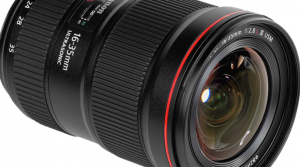— July 16, 2019

Video has increasingly become an effective and favorable medium for many businesses to drive engagement with digital audiences. In fact, video snippets are one of the top three content types used by B2B marketers in 2018, along with long-form content and social media stories. Video content appeals to viewers that are both being introduced to your business, as well as leads who are deeper in the sales funnel and looking for more information about your products or services.
With video marketing being one of the top digital marketing trends, now is the time for B2B marketers to focus on creating engaging and valuable videos for branding, lead generation and thought leadership.
If you are ready to start making your own marketing videos, consider the following five tips:
Captivate your viewer in the first few seconds
It is no myth that first impressions are highly important. If your content doesn’t capture your viewer’s attention in the first 15 seconds, it is unlikely that they are going to watch until the end.
The average viewer attention span is less than 10 seconds, which is not much time to introduce a story. Create an introduction to your video that includes visuals to draw in the attention of your viewer and introduce your video’s purpose. Animated title introductions are a great way to creatively present your story and captivate your viewer.
Then, get to your story quickly. Now that you have the viewer’s attention, your message is your priority.
Keep your video concise and to the point
Like the need to draw in viewers within the first 10 seconds, people don’t want to watch a long, drawn-out story. Choose quality over quantity when it comes to your video’s length, and include only the information that pertains to the message of your video.
Ideally, company overviews and explainer videos should be up to 2 minutes long for optimal engagement. Longer video lengths aimed at people willing to give 15-30 minutes of their day should be leveraged for webinars or on-demand demo videos where your audience is interested in your product/service.
When editing your video content to account for length and flow, consider the following questions:
- Does the information provided add value to the audience and still convey a story/purpose?
- Does the edited content align with your marketing goals (e.g., raise brand awareness or generate leads)?
- What is my audience interested in learning and does this video fulfill those objectives?
Create content that can be consumed with AND without sound
According to Facebook, as much as 85% of video content is viewed without any sound. Video that can be enjoyed without sound allows the viewer to stay engaged without interrupting their ongoing activities.
Creating video content without sound can be difficult when dialogue is an important aspect of your video messaging. However, adding supportive descriptions and text overlays throughout your video will keep your viewers engaged without requiring sound. Incorporating subtitles is also a very practical solution for dialogue-heavy videos and easy to implement for the basic video creator.
Focus on your story’s fluidity so that the viewer can easily watch and understand your message.
Consider including a call-to-action in the MIDDLE of the video
Often, CTAs are at the end of the video content. For many marketers, the end of the video is the logical spot for a CTA because the viewers that finish the video are more likely to turn into prospects and leads, as they have already demonstrated interest in your product or service by finishing the video.
However, call-to-actions in the middle of the video have shown to draw in higher conversion rates when viewers are most engaged. In an analysis provided by Wistia, conversion rates were a little over 15% for mid-roll CTAs and 10% for end-roll CTAs. This may be surprising at first, but the longer a video continues, the more people start to drop off.
CTAs in the middle of the video are viewed by more individuals and thus more likely to catch a few more of those people that otherwise drop-off in the second half of the video. Whereas a call-to-action at the end of the video is only seen by viewers that complete the video.
Implement your CTAs in a way that weaves with your video story. Don’t let your CTA pull away from that story or draw overt attention to the advertising direction of the video.
Optimize for search
Optimizing your marketing videos for search engines will help get your video more impressions by ranking higher in search results pages. Search engine algorithms use information from video descriptions, so be sure to include keywords from your video and provide a description that speaks to your target audience.
Additionally, make sure your marketing videos are optimized for mobile, as more and more YouTube videos are consumed on mobile devices (70%) vs desktop (30%).
Your video thumbnail can also help you stand out in searches. Freeze an interesting frame from your video that also captures a key element of your story. Understand the various video SEO elements and how to implement them with your marketing videos.
Videos are great for a wide variety of placements including product pages, landing pages, online advertisements and social media platforms. Video content can convey your company’s messaging in an effective and engaging way, and can be used for purposes such as product launches, company overviews or webinars and demos. Follow our five tips to optimize your video to be viewed and enjoyed, and generate new leads for your business.
Digital & Social Articles on Business 2 Community
(52)






